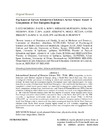| dc.contributor.creator | Murtagh, Elaine | |
| dc.contributor.creator | McMinn, David | |
| dc.contributor.creator | Row, David A. | |
| dc.contributor.creator | Murtagh, Shemane | |
| dc.contributor.creator | Nelson, Norah M. | |
| dc.contributor.creator | Čuk, Ivan | |
| dc.contributor.creator | Atiković, Almir | |
| dc.contributor.creator | Peček, Mojca | |
| dc.contributor.creator | Breslin, Gavin | |
| dc.contributor.creator | Murphy, Marie H. | |
| dc.date.accessioned | 2018-11-19T11:40:30Z | |
| dc.date.available | 2018-11-19T11:40:30Z | |
| dc.date.issued | 2014 | |
| dc.identifier.citation | McMinn, D., Row, D.A., Murtagh, S., Nelson, N.A., Čuk, I., Atiković, A., Peček, M., Breslin, G., Murtagh, E.M., Murphy, M.H. (2014) 'Psychosocial factors related to children’s active school travel: A comparison of two European regions.' International Journal of Exercise Science 7(1), pp. 75-86. ISSN: 1939-795X. | en_US |
| dc.identifier.issn | 1939-795X | |
| dc.identifier.uri | http://hdl.handle.net/10395/2395 | |
| dc.description | Psychosocial factors related to children’s active school travel: a comparison of two European regions | en_US |
| dc.description.abstract | Inequalities in health behaviors exist between regions of Europe, along a North West/South East axis. This study investigated whether prevalence of walking to school and associated psychosocial antecedents differed between these two European regions. Participants were 1,263 children aged 7-11 years, from five countries. Children from North West Europe (n = 641) and South East Europe (n = 622) completed a school travel questionnaire that measured demographics, school commuting mode, travel companion, feelings about their local area, and Theory of Planned Behavior (TPB) variables related to walking to school. Multivariate analysis of variance was used to investigate differences in TBP variables between children from the two regions of Europe. More children from South East Europe walked to school (70.8%) compared to those in the North West (47%). For the TPB variables, a significant multivariate main effect for region was found (Wilks’ λ=.94, F (4, 1201)=20.55, pp. Inequalities in walking to school exist between European regions. Children from South East Europe walk to school more than their counterparts from the North West. However children from North West Europe display higher scores on TPB variables, suggesting that psychosocial constructs related to walking to school may not explain rates of engagement in this behaviour. | en_US |
| dc.language.iso | eng | en_US |
| dc.publisher | Berkeley Electronic Press | en_US |
| dc.relation.ispartofseries | 7;1 | |
| dc.rights.uri | http://digitalcommons.wku.edu/cgi/viewcontent.cgi?article=1520&context=ijes | en_US |
| dc.subject | School travel | en_US |
| dc.subject | Planned behaviour | en_US |
| dc.subject | Physical activity | en_US |
| dc.subject | Health behaviour inequalities | en_US |
| dc.subject | Europe | en_US |
| dc.title | Psychosocial factors related to children’s active school travel: A comparison of two European regions | en_US |
| dc.type | Article | en_US |
| dc.type.supercollection | all_mic_research | en_US |
| dc.type.supercollection | mic_published_reviewed | en_US |
| dc.description.version | Yes | en_US |


